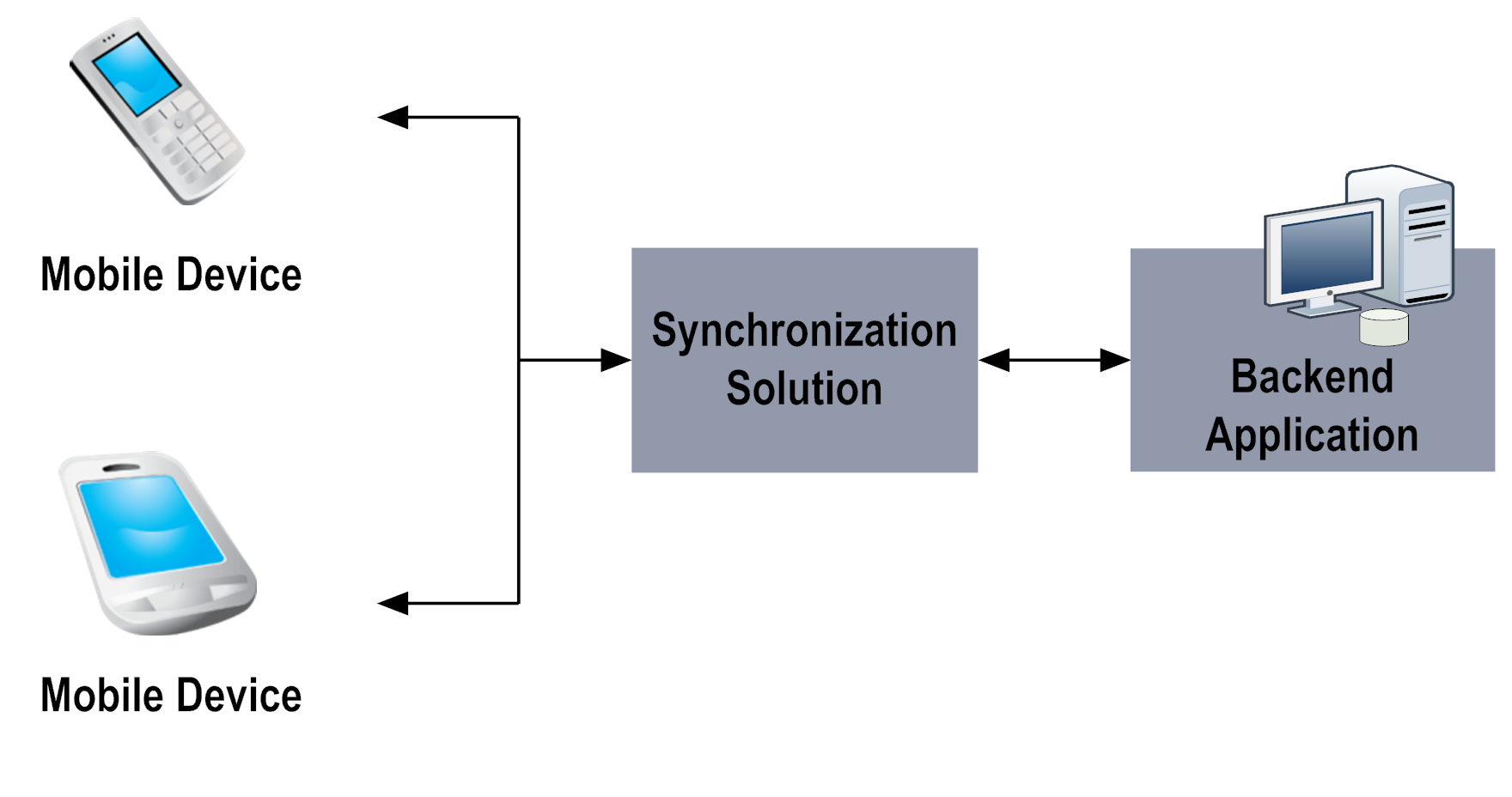What Is Mobile Data Synchronization?
Mobile devices have transformed our workplace and our personal and business interactions by providing the ability to have instant information at our fingertips. Almost every organization has “Mobile” in its strategic plans as a way to enable consumers, customers, and employees to share data. This trend has fueled the demand to expose, to mobile devices, business functionality that was normally reserved for “in-office” applications.
Mobile data synchronization solutions provide a way to accomplish the following:

Transfer data back and forth between mobile devices and enterprise applications and their databases.

Ensure data consistency between mobile devices and the enterprise application by resolving any data conflicts that result from multiple simultaneous updates.

Enable the server infrastructure to be scalable.
Challenges exist that are unique to the mobile environment, such as unreliable networks, low bandwidth speeds, and devices that are connected only occasionally to a network. Mobile data synchronization solutions offer the following advantages:
 Reduced dependency on network connections.
Reduced dependency on network connections. Employees can work offline on a mobile device and then synchronize their work when they are connected to the server, thereby eliminating the dependency on a steady network connection.
 Improved data access speeds.
Improved data access speeds. During synchronization, only the changed data is transferred between the mobile device’s local database and the backend application. This approach alleviates network bandwidth limitations and improves data access speeds.
 More accurate data.
More accurate data. Replacing paper data entry with the use of a mobile device helps improve the accuracy of the data. For example, the practice of capturing inventory data on paper, and manually transferring the data to an IT system later, is error prone and time consuming. Such a practice can lead to issues in order management and the supply chain. Entering this data on a mobile device, and then uploading the data when the device is connected to the server, helps automate the process and improve the accuracy of the data.
